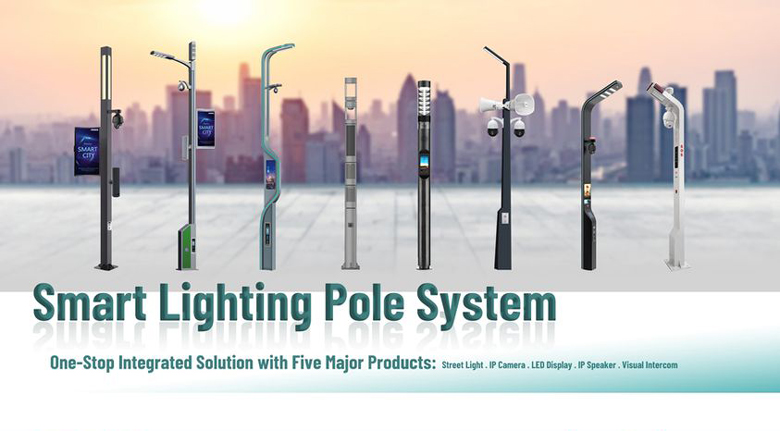

Leave a message

With the continuous advancement of smart city infrastructure construction,smart pole industry is in a rapid development stage. Smart poles and their mounted equipment involve numerous industries and diversified fields, and their usage scenarios have shifted from single city roads to diverse industry and space applications.

City roads refer to roads that reach various areas of the city, serving internal transportation and residents, supporting daily life, work commutes, cultural and entertainment activities, and connecting to external transport. In this scenario, the application features of smart poles include:
Essential configurations include smart lighting, video collection, mobile communication, traffic signals, etc.;
Optional configurations should be selected based on specific circumstances, such as public broadcasting, intelligent traffic, weather monitoring, one-key call, etc.
Should be comprehensively considered based on the functions of city road traffic, lighting, monitoring, communication, instructions, and so on, and the working environment, space volume, load capacity limitations, overall security, stability, and appearance coordination should also be taken into account; Technical parameters must meet the normal operation needs of the mounted equipment.
Highways refer to roads passable by cars between cities, and between urban and rural areas, including roadbeds, pavements, bridges, culverts, tunnels. In this scenario, the application features of smart poles include:
Essential configurations include video collection, mobile communication, traffic signs; Optional configurations should be selected based on specific circumstances, such as smart lighting, intelligent traffic, environmental monitoring, weather monitoring.
Highways are generally under closed management, installed along both sides or the central isolating belt. The distance from the ground of parts extending to the lane must meet the installation height requirements of highway equipment and facilities. In addition to meeting the highway specifications, functionalities to prevent artificial damage should also be considered.
Airport space generally refers to outdoor areas, such as tarmacs, runways, areas for maintaining and parking aircraft. In this scenario, the application features of smart poles include:
Essential configurations include smart lighting, video collection; Optional configurations should be selected based on specific circumstances, such as mobile communication, public broadcasting, environmental monitoring, weather monitoring.
The special requirements of airports for smart poles include "height requirements of the pole body" and brightness penetrability; At the same time, airports usually do not consider functionalities like intelligent traffic, information release, traffic signs, vehicle-road cooperation.
Train station space refers to places bearing railway passenger and cargo operations and related technical tasks. In this scenario, the application features of smart poles include:
Essential configurations include smart lighting, video collection, information release, one-key call, etc.; Optional configurations should be selected based on specific circumstances, such as intelligent traffic, public broadcasting, environmental monitoring, weather monitoring, charging piles, etc.
Deployed in train station squares and surrounding public areas. Mainly serving passengers, due to the high pedestrian flow at train stations, the primary consideration is the application in public safety.
 【DSPPA Demo】PAVA8000 EN54 Voice Evacuation SystemNovember 12, 2020Abstract: DSPPA PAVA8000 EN54 Voice Evacuation SystemToday, we are gonna show you a demo about our PAVA8000 EN54 Voice Evacuation System.PAVA8000EN54 Voice Evacuation System can not only support manua...view
【DSPPA Demo】PAVA8000 EN54 Voice Evacuation SystemNovember 12, 2020Abstract: DSPPA PAVA8000 EN54 Voice Evacuation SystemToday, we are gonna show you a demo about our PAVA8000 EN54 Voice Evacuation System.PAVA8000EN54 Voice Evacuation System can not only support manua...view The National Standard Approval Meeting held in BeijingJuly 19, 2019The National Standard Approval Meeting held in BeijingThe approval meeting of the National StandardTechnical standard of public address system engineeringis held in Beijing on July 16, 2019. Xue Chang...view
The National Standard Approval Meeting held in BeijingJuly 19, 2019The National Standard Approval Meeting held in BeijingThe approval meeting of the National StandardTechnical standard of public address system engineeringis held in Beijing on July 16, 2019. Xue Chang...view